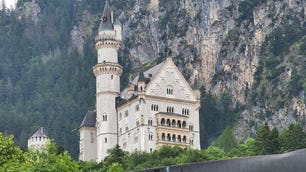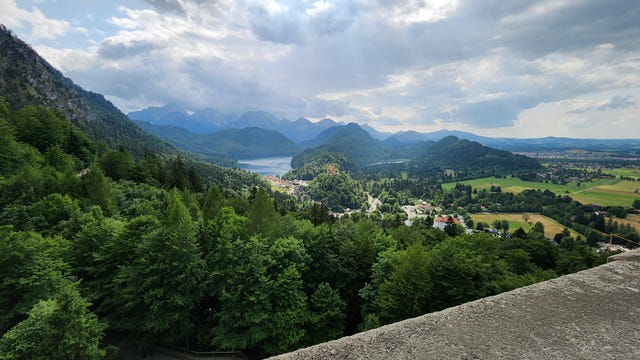Technologies
Should You Bring a Camera When You Travel or Is a Phone Enough?
Apple iPhone, Samsung Galaxy Ultra or mirrorless camera: Here’s what it’s like to shoot travel photos with each.
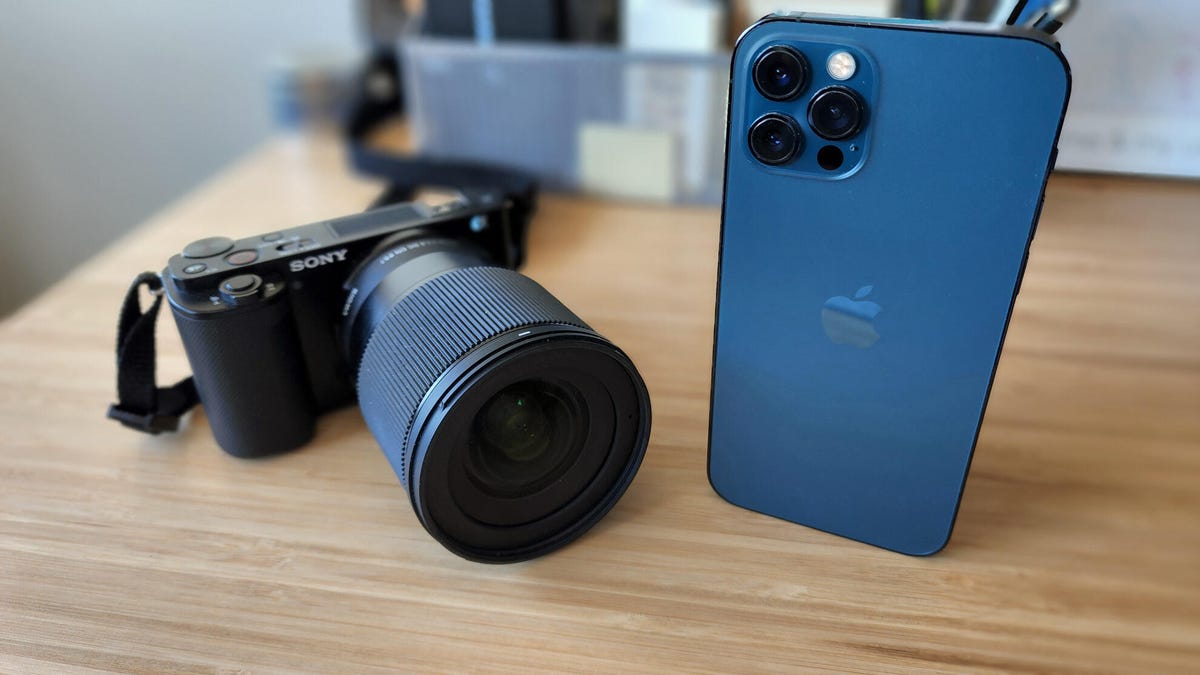
For most travelers, the smartphone in your pocket works just fine for taking photos of adventures. But what are you missing by relying on your phone alone? I used my recent trip to Germany to explore when a casual sightseer would benefit from having a dedicated camera or if their phone would be enough.
While everyone’s kit is different, most travelers won’t be hauling around a DSLR or pro-quality mirrorless camera. Instead, they’ll debate between buying a fancy new phone or a more affordable everyday mirrorless camera. (Though there are point-and-shoot options if you want a standalone camera, they may not outstrip your phone’s photo capabilities.)
I’m no pro photographer, so don’t expect expert advice on how to get the most out of this kit, but for casual photo takers who leave their camera on the auto settings, this is a good comparison to see what each device can handle without much fuss amid a busy trip abroad.
My kit isn’t the best you’ll find, but it’s probably not far off from what many travelers may pack in their pockets and bags: my personal iPhone 12 Pro, a Samsung Galaxy S22 Ultra (to test a more camera-intensive phone), and a snug Sony ZVE-10 mirrorless camera with a Sigma 16mm f1.4 DC DN (an affordable prime lens).
Here’s the breakdown for what each device did best — and what they couldn’t do.
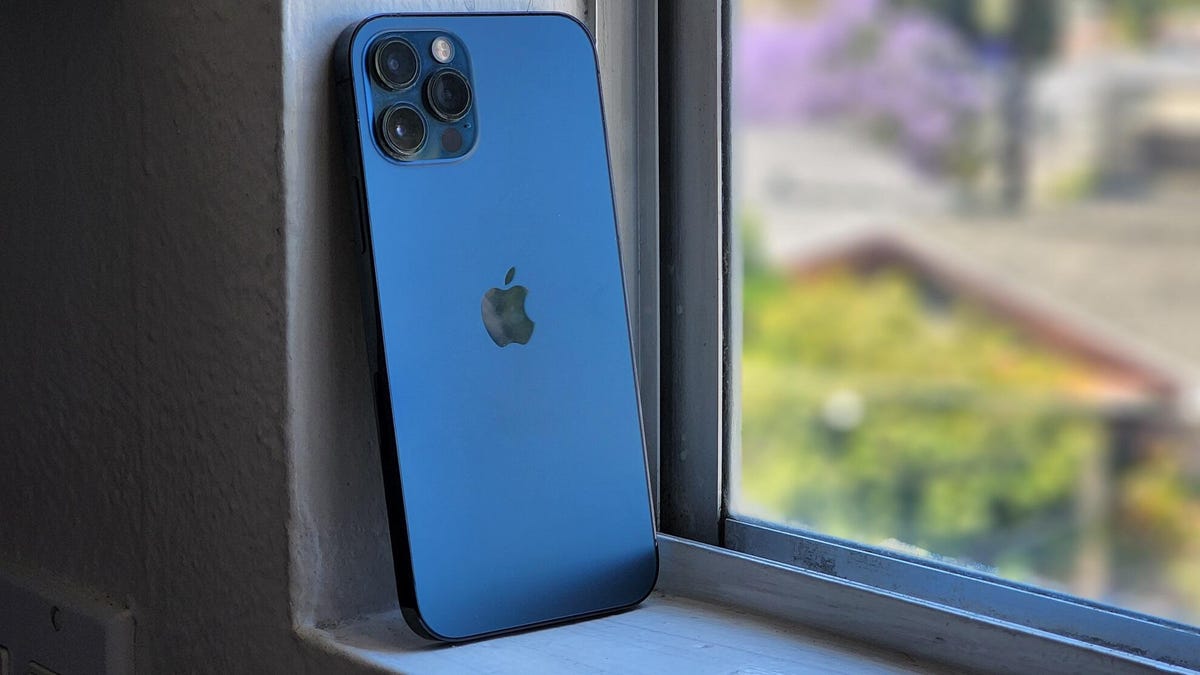
iPhone 12 Pro
The iPhone 12 Pro is a few years past its October 2020 launch date but still plenty capable, and its photo capabilities are probably similar to what many older premium and newer cheaper phones can achieve. When it debuted, the iPhone 12 Pro retailed for $999 (£999, AU$1,699) but years later it isn’t really sold anywhere aside from refurbished at sub-$500 prices. You can still pick up a stock iPhone 12 on Apple’s website for $599, but it lacks the 2x telephoto lens.
The iPhone 12 Pro took basic photos well, albeit with the warm tones typical of iPhone photos. Images I shot didn’t have quite the same color accuracy as the Samsung S22 Ultra or the Sony ZVE-10. Still, the iPhone 12 Pro was great at taking daytime shots of streets, museums and breezy lunches. It struggled with dimly lit dinners and at night, with photos having a grainy texture from image noise.
Another limit was the iPhone 12 Pro’s 2x optical zoom, which was far inferior to the Samsung Galaxy S22 Ultra’s telephoto capabilities. Since I was mostly seeing landscapes, I rarely felt the need to zoom in on a distant subject. The ultra-wide camera was more useful, and its 13mm-equivalent focal length allowed me another option to the 26mm-equivalent main camera for framing a specific shot.
In head-to-head comparisons with the mirrorless camera, the iPhone 12 Pro held up surprisingly well. The phone captured near and background distant subjects in crisp detail. The mirrorless camera was more selective in its focus, largely homing in on one or the other and requiring a bit more finesse.
As I was using the iPhone for every other travel-necessary app like navigation and wireless payments, it was in my pocket every day and wasn’t a burden to carry. That meant it was on-hand for me to take quick photos out the windows of our train or rental car of passing scenery at just the right time.
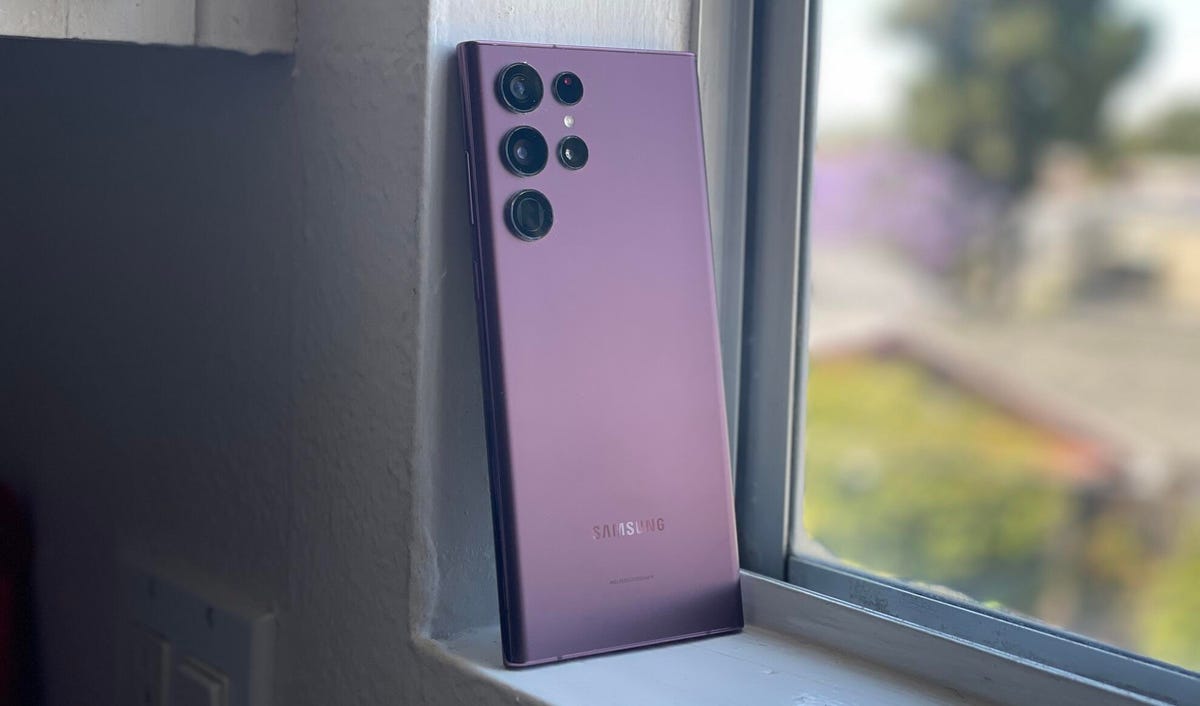
Samsung Galaxy S22 Ultra
While superseded by this year’s Samsung Galaxy S23 Ultra, the Samsung Galaxy S22 Ultra I took on my trip is still a camera powerhouse. It has a 108-megapixel main camera and a 12-megapixel ultrawide camera with 120-degree field of view, but it’s really known for its zoom photography. It has not one but two telephoto lenses: a 10-megapixel with 3x optical zoom and a 10-megapixel periscope-style capable of 10x optical zoom.
As expected, the Galaxy S22 Ultra took great photos at a distance. Did I need zoom photo capability? Not really! Most of my subjects were 20 to 50 feet away.
Unless, of course, you’re taking shots of distant buildings, like the Neuschwanstein Castle on Germany’s southernmost border, nestled in the foothills of the Alps within spitting distance of Austria. It was nice to have more control to frame the photos with the zoom capability, even if I didn’t need the 100x «space zoom.» The feature combines optical and digital zoom with AI tricks to home in on a cropped-in corner of zoomed-in image. The 30x was enough and rarely necessary. Regardless, the S22 Ultra’s 10x optical and digital hybrid zoom produced far better photos than the iPhone 12 Pro’s grainy 10x digital zoom.
Here’s the Samsung Galaxy S22 Ultra’s camera from the road at the foot of a trail leading up to Neuschwanstein, with shots from the main camera at 1x, 3x, 10x and 100x zoom.
Compare that to the iPhone 12 Pro’s main camera at 1x, 2x and 10x.
The Galaxy S22 and iPhone 12 Pro both did a decent job shooting photos with a mixture of dark and light foregrounds and backgrounds, especially with bright skies that can be easily washed out. Below is a shot from up on a balcony of the Neuschwanstein castle, looking west into the valley.
But it’s easy to see how cool the Galaxy S22 Ultra’s zoom capabilities are when perched above the landscape and using successive zoom intervals to get closer shots of a subject.
Lastly, here’s a simple comparison of shots of the castle itself, with the Galaxy S22 Ultra’s main camera versus the iPhone 12 Pro’s camera.
The Galaxy S22 Ultra is one of the best phones we’ve tested, which garnered a CNET Editor’s Choice Award in our review. It’s more convenient to handle than my mirrorless camera, though it doesn’t have as many photo settings.
The Galaxy S22 Ultra is a large phone, so it took up a lot of space in my pocket. Even if I were to buy it to replace my iPhone 12 Pro, it would still be cumbersome to yank out for casual photos. As it was, there were a handful of situations where I might have lost the S22 if it had been in my pocket instead of the smaller iPhone 12 Pro, including a bobsled-like roller coaster on a hillside in the middle of the Black Forest. (Which, sadly, wouldn’t allow phones on the course, but there are ride-through videos on YouTube.)
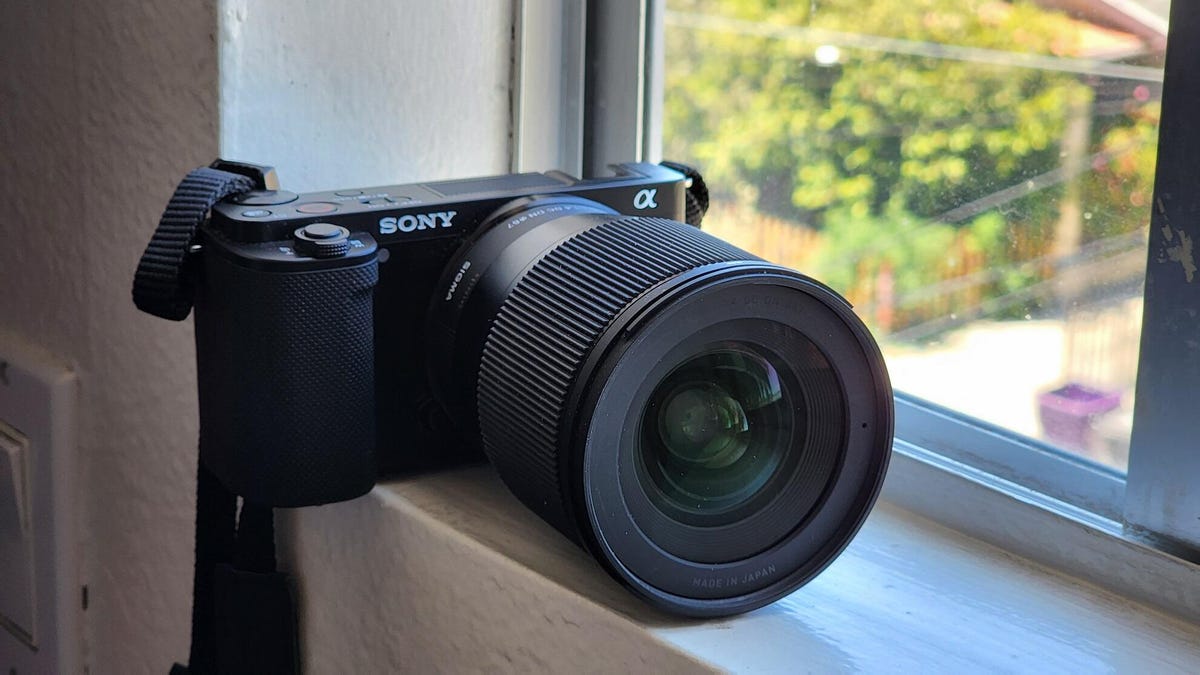
Sony ZVE-10 mirrorless camera
The Sony ZVE-10 is aimed at vloggers with its 4K video shooting and light weight, but that also made it great for taking still photos with its 24-megapixel resolution. The camera is reasonably affordable at $700, and has swappable lenses via a lens mount.
I used the ZVE-10 with a Sigma 16mm f/1.4 prime lens I picked up for $399 to take better product shots. The Sony body and Sigma lens combo took superior photos to either phone in medium to close range. Thanks to the ZVE-10’s crop APS-C sensor, the 16mm lens was more like a 24mm lens, and had essentially the same field of view as the standard rear cameras on the iPhone 12 Pro and Galaxy S22 Ultra.
For the majority of the trip, the short-range prime lens was fine, and I didn’t miss being able to zoom in on distant objects. You can get pretty close to any subject that’s worth taking photos of, though I would want a telephoto lens at a concert or for shooting wildlife. I did miss not being able to zoom out with either phone’s ultra-wide lenses, especially in cramped quarters like awkwardly small museum rooms.
The ZVE-10 performed fine with landscape shots but excelled in reasonable-size enclosed spaces, capturing greater color contrast and lighting/shadow variance. Compare these photos below of a fresco on a low roof in the Cologne Cathedral, shot with the ZVE-10 and the iPhone 12 Pro, respectively.
When shooting close subjects, the ZVE-10 excelled at capturing evocative lighting, and the f/1.4 Sigma lens’ natural bokeh led to moodier shots compared to the uniform brightness of the iPhone 12 Pro.
And while the iPhone 12 Pro produced uniformly brighter and crisper photos, the post-processing to get such clarity led to some flattened color and shadow. In photos of this iron statue of the Chinese mythological aquatic monkey demon Wuzhiqi located in Berlin’s Humboldt Forum, you can see more detail in the iPhone 12 Pro’s shot, but it loses the red-brown tone from years of oxidation.
It was also easier to get the ZVE-10 to produce a depth effect naturally. With the iPhone 12 Pro, portrait mode requires more fiddling and an ideal distance between the phone, your subject and the background. But the camera’s depth effect made it tough to keep everything in focus when I was taking photos of food and wanted to show the whole plate.
Weight comparison
| iPhone 12 Pro | 189 grams | 6.7 ounces |
|---|---|---|
| Samsung Galaxy S22 Ultra | 229 grams | 8.1 ounces |
| Sony ZVE-10 and Sigma 16mm lens | 709 grams | 29.1 ounces |
Unsurprisingly, the ZVE-10 and lens far outweighed the phones. Though not enough to be cumbersome, the weight and size differences are noticeable. The camera and lens fit snugly in my compact camera bag, which stayed out of the way while slung over my shoulder. But the camera was more annoying to lug around and pull out to take photos than a phone in my pocket.
Needing to manually upload my photos was a bit annoying, too. The Sony Imaging Edge app let me send photos directly from the camera to my phone, but it’s clunky for bulk uploads. And forget about handing your fancy mirrorless camera over to a stranger to take a photo of your traveling party for fear of them dropping it or not knowing how to use it. Thankfully, the ZVE-10’s rotating display meant I could angle it forward to pull off selfies, which consequently took better shots than either phone’s front-facing camera but didn’t capture as much subject matter. Both the iPhone’s and Galaxy’s selfie cameras had wider field-of-views.
Lastly, the mirrorless camera may have more potential for better shots since it can save images in the RAW format, which gives photo editors a lot more data and freedom to tweak. It’s worth pointing out that my iPhone 12 Pro can shoot in Apple’s ProRAW format, while my Samsung Galaxy S22 Ultra can shoot in Expert RAW format via a separate app (though it’s natively in the camera app as of the Samsung Galaxy S23 series). Both can be edited much like standard RAW formats. I deliberately shot photos in JPG format for all devices in this test, since most travelers will simply point and shoot with the default format. All these photos could certainly look better with some Photoshop touch-up.
Wrap-up
Ultimately, this was an unscientific test rather than a thorough field guide. I set out wondering whether my daily smartphone would miss out on any particular travel shots that a camera-focused phone like the Samsung Galaxy S22 Ultra or my mirrorless camera would be capable of picking up.
Most of the time the iPhone was fine, but there were edge cases where the S22 Ultra and ZVE-10 outperformed my older iPhone. And as I am not an especially gifted photographer, I acknowledge that someone with real skills could finesse far better images out of either the Galaxy S22 Ultra or the ZVE-10 that could likely put the iPhone to shame in all situations.
Also, your mileage will vary depending on which kinds of photos you want to take. If you absolutely need to zoom in on distant subjects, a phone like the S22 Ultra is the right choice — or you could buy a telephoto lens for your mirrorless camera.
But from citywide landscapes to museum art piece shots to selfies, the iPhone 12 Pro handled nearly everything I needed it to do. It also helped that I could effortlessly post my photos on social media from my main phone rather than having to transfer them from the mirrorless camera. That’s essential to the travel experience, as I’d add a photo to my Instagram story and get friends responding in minutes with recommendations for historical monuments and food in my area. And it’s not like my mirrorless camera could make calls or text.
This isn’t necessarily an iPhone recommendation, just reiterating that your daily driver will be just as useful while traveling as it is at home (but better cameras and a quality ultra-wide lens certainly help). The shots you’ll take of yourself and peripatetic partners will mostly be 10 to 20 feet away in bright daylight and low light, with some night scenes here and there. Perhaps a higher-end camera would capture more artistic and high-quality depth shots, but you’ll probably want to capture the fleeting and low-key moments more than the artfully posed ones.
Technologies
Today’s NYT Mini Crossword Answers for Wednesday, Jan. 14
Here are the answers for The New York Times Mini Crossword for Jan. 14.

Looking for the most recent Mini Crossword answer? Click here for today’s Mini Crossword hints, as well as our daily answers and hints for The New York Times Wordle, Strands, Connections and Connections: Sports Edition puzzles.
Need some help with today’s Mini Crossword? It’s not too tough, but 8-Across stumped me, so I had to pass on that and fill in the Down answers to solve it. And if you could use some hints and guidance for daily solving, check out our Mini Crossword tips.
If you’re looking for today’s Wordle, Connections, Connections: Sports Edition and Strands answers, you can visit CNET’s NYT puzzle hints page.
Read more: Tips and Tricks for Solving The New York Times Mini Crossword
Let’s get to those Mini Crossword clues and answers.
Mini across clues and answers
1A clue: Abruptly stop texting
Answer: GHOST
6A clue: Shaving kit item
Answer: RAZOR
7A clue: 2024 film role for which Mikey Madison won Best Actress
Answer: ANORA
8A clue: The ancient Chinese used compressed blocks of tea leaves as this
Answer: MONEY
9A clue: Shape of a round chart
Answer: PIE
Mini down clues and answers
1D clue: Dad’s dad, informally
Answer: GRAMP
2D clue: Capital of Vietnam
Answer: HANOI
3D clue: ___ layer, part of Earth’s atmosphere
Answer: OZONE
4D clue: How you might wake up after sleeping funny
Answer: SORE
5D clue: Cafeteria food carrier
Answer: TRAY
Don’t miss any of our unbiased tech content and lab-based reviews. Add CNET as a preferred Google source.
Technologies
Google Could Revive Last Year’s Bright Pink Color for the Pixel 10a
Google’s upcoming Pixel 10a is expected to launch in February with some new colors, including one popular ask.
The Google Pixel 9a is one of Google’s most affordable Pixel phones, and it includes one of the most frequently requested colors — bright pink. With the Google Pixel 10a rumored to launch in February, we’re already getting a hint at the colors the new model will come in.
According to Roland Quandt, a regular mobile leaker on Bluesky, the Google Pixel is expected to be offered in obsidian (black), berry (pink), fog (light gray), and lavender colors. However, it’s the berry hue that is intriguing customers.
A representative for Google did not immediately respond to a request for comment.
Don’t miss any of our unbiased tech content and lab-based reviews. Add CNET as a preferred Google source.
«I always love to see phones come in vibrant colors, and it’s especially welcome in more budget-friendly options,» said Abrar Al-Heeti, senior technology reporter at CNET. «Yes, we tend to slap a case on our phones anyway, but just knowing your phone touts a bold color can make it feel like more of a statement piece, rather than a bland piece of tech.»
Pink is one of the most requested color options for the Pixel phones. CNET sister site Mashable loved the color when it debuted on the Pixel 9. Phone rivals like Apple and Samsung are usually expected to offer a pink color option in their flagship and midrange phone lineups, so it’s not surprising to see the berry color on the Pixel 10a.
«I’ll say that Google loves having Pixel phones in pink,» said Patrick Holland, CNET managing editor. «The Pixel 9 and 9a come in peony (a bright, bold pink) and the 9 Pro in rose quartz (a more muted pink). The Pixel 10 series lacks any pinkish hues.»
Quandt also says that the Pixel 10a will have 128GB and 256GB storage models, and will launch in mid-February. That’s earlier than expected compared with the Pixel 9a, which was revealed in mid-March 2025 for a launch on April 10. In terms of specifications, we expect the Pixel 10a to be a modest upgrade compared with previous generations. According to leaks, the Pixel 10 is unlikely to feature a newer Tensor G5 chip, and it’s likely to retain the same overall design as the Pixel 9a.
One leaker, Mystic Leaks on Telegram, expressed disappointment and revealed additional specs, including the absence of a telephoto lens, UFS 3.1 storage, a Tensor G4 chip, a 2,000-nit display and no Magic Cue, which is Google’s AI feature for the Pixel 10.
Technologies
Today’s NYT Connections Hints, Answers and Help for Jan. 14, #948
Here are some hints and the answers for the NYT Connections puzzle for Jan. 14 #948.

Looking for the most recent Connections answers? Click here for today’s Connections hints, as well as our daily answers and hints for The New York Times Mini Crossword, Wordle, Connections: Sports Edition and Strands puzzles.
Today’s NYT Connections puzzle is kind of tough. The blue category, not the purple one today, expects you to find hidden words in four of the words given in the grid. Read on for clues and today’s Connections answers.
The Times has a Connections Bot, like the one for Wordle. Go there after you play to receive a numeric score and to have the program analyze your answers. Players who are registered with the Times Games section can now nerd out by following their progress, including the number of puzzles completed, win rate, number of times they nabbed a perfect score and their win streak.
Read more: Hints, Tips and Strategies to Help You Win at NYT Connections Every Time
Hints for today’s Connections groups
Here are four hints for the groupings in today’s Connections puzzle, ranked from the easiest yellow group to the tough (and sometimes bizarre) purple group.
Yellow group hint: That’s not going anywhere.
Green group hint: End user or customer.
Blue group hint: Ask a meteorologist.
Purple group hint: Not noisy.
Answers for today’s Connections groups
Yellow group: Fixed.
Green group: Receiver of goods or services.
Blue group: Starting with weather conditions.
Purple group: Silent ____.
Read more: Wordle Cheat Sheet: Here Are the Most Popular Letters Used in English Words
What are today’s Connections answers?
The yellow words in today’s Connections
The theme is fixed. The four answers are fast, firm, secure and tight.
The green words in today’s Connections
The theme is receiver of goods or services. The four answers are account, client, consumer and user.
The blue words in today’s Connections
The theme is starting with weather conditions. The four answers are frosty (frost), mistletoe (mist), rainmaker (rain) and snowman (snow).
The purple words in today’s Connections
The theme is silent ____. The four answers are auction, movie, partner and treatment.
Don’t miss any of our unbiased tech content and lab-based reviews. Add CNET as a preferred Google source.
-

 Technologies3 года ago
Technologies3 года agoTech Companies Need to Be Held Accountable for Security, Experts Say
-

 Technologies3 года ago
Technologies3 года agoBest Handheld Game Console in 2023
-

 Technologies3 года ago
Technologies3 года agoTighten Up Your VR Game With the Best Head Straps for Quest 2
-

 Technologies4 года ago
Technologies4 года agoBlack Friday 2021: The best deals on TVs, headphones, kitchenware, and more
-

 Technologies4 года ago
Technologies4 года agoGoogle to require vaccinations as Silicon Valley rethinks return-to-office policies
-

 Technologies4 года ago
Technologies4 года agoVerum, Wickr and Threema: next generation secured messengers
-

 Technologies4 года ago
Technologies4 года agoOlivia Harlan Dekker for Verum Messenger
-

 Technologies4 года ago
Technologies4 года agoiPhone 13 event: How to watch Apple’s big announcement tomorrow






